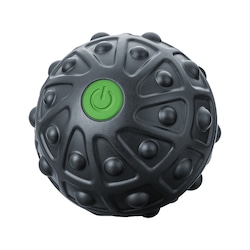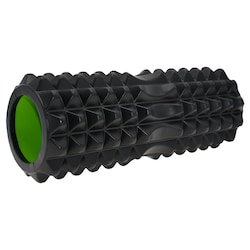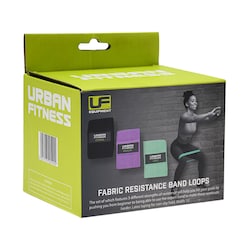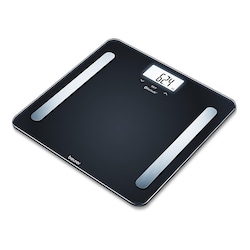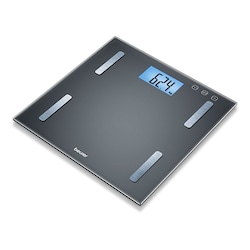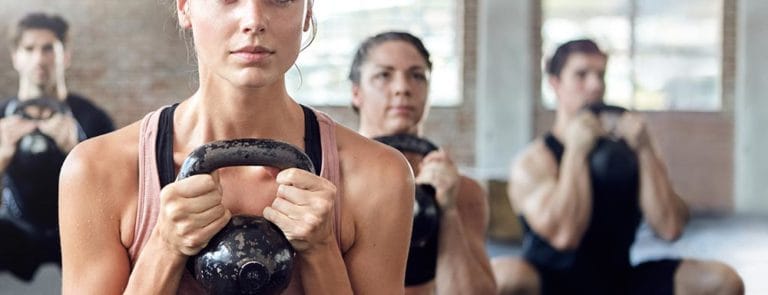15% off £20
13 of the best cardio exercises

Love it or hate it, cardio isn’t going anywhere in the fitness world.
Fortunately, there are many ways to squeeze some cardio into your life – and some you may even enjoy!
Let’s explore just what cardio is, it’s benefits, 13 of the best cardio exercises + some fun 30-day cardio challenges for you to try.
What is cardio?
Cardio is a broad term for any form of exercise that increases your heart rate.
Usually, when discussing cardio, activities like swimming, cycling, running and rowing pop up.
That’s not to say weights can’t be involved, but it would usually be a fast-paced circuit with the main goal of keeping your heart rate up over an extended period of time.
This type of exercise is also sometimes referred to as aerobic exercise, which has the slightly different definition: any form of exercise that uses oxygen to fuel your muscles.
What are the benefits of doing cardio?
There are many! Remembering there may come in handy if you need some motivation to get out of the door and do your run.
-
Helps with weight/fat loss
Most exercise is good for weight and fat loss when combined with generally eating less calories than your burn.
Cardio exercises like running, spinning and dancing cause our hearts to beat faster and increase our daily calorie burns.
So, a quick blast on the bike or run down the park a few times a week should help you to maintain or lose weight.
One study on 199 sedentary, overweight or obese adults found that aerobic training was best for reducing overall fat and body mass.
However, a program including aerobic training and resistance training is needed for increasing lean muscle mass in middle-aged, overweight/obese people.1
-
Good for your heart
Cardiovascular exercise works the heart, and in turn, supports it too.
One of the first things a doctor will prescribe to people at risk of (or who have) heart disease is exercise that gets the heart pumping.
Cardio exercises in particular can strengthen the heart and helps it to pump blood more efficiently throughout your body.
Handpicked content: Best superfoods for a healthy heart
-
Lowers blood pressure
Having high blood pressure is one of the 5 major risk factors for cardiovascular disease (as well as smoking, obesity, abnormal values for blood lipids and a sedentary lifestyle.
Cardio exercise can help reduce ‘bad’ cholesterol (LDL) levels in the blood and raise the ‘good’ cholesterol (HDL).
That means getting up and moving more can easily tick at least 2 of those risk factors off the list (high blood pressure and a sedentary lifestyle).2
-
Helps you sleep
A morning workout can give you an instant boost of energy for the day ahead, but did you know it could also help you sleep?
If you’re struggling to sleep at night, it is advised that your try to fit some cardiovascular exercises into your day, preferably not too close to bedtime.
A study on people with chronic sleep problems found that regular exercise and good sleep hygiene can really help those with insomnia.3
-
Makes you feel better
You’ve probably already heard about how exercise can flood your body with feel-good endorphins.
As well as giving you that elusive temporary runners’ high or similar, research now suggests that cardio can also have a long-term effect on mental health.
One study asked depressed participants to walk on a treadmill and do intervals for 30 minutes every day.
After 10 days they were asked to report any changes they had experienced in their mood.
Every participant reported significant reduction in depression symptoms, which suggests that exercise can have a real impact on mental health.4
-
Supports the immune system
One thing we can do to support our immune system is to regularly exercise.
A study on sedentary and active women and how exercise impacted their immune system found interesting results.
The data showed that moderate and regular aerobic exercise can increase certain antibodies called immunoglobulins found in the blood, and therefore strengthen immune system function.5
-
Safe for most people
Most people, old and young, are totally fine to go for a cardio session, even if it’s just a brisk walk around the neighbourhood rather than hiking up a mountain.
If someone is totally new to exercise but wants to start their fitness journey, cardio is a good place to start – as the weight rack at the gym may still be a little hard to handle.
-
Doesn’t have to cost a thing
One of the best things about cardio is its accessibility and affordability – anyone can do it!
Running, jogging, walking, a fitness video in your living room, dusting the cobwebs off the bike in the garage… anyone can do a bit of cardio.
Sometimes exercise regimes can seem intimidating and regimented, but as there are so many different cardio exercises, you can do as little or as much as you like.
Is 30 minutes of cardio enough?
It can be, yes!
The NHS recommends that everybody does at least 150 minutes of moderate intensity activity a week or 75 minutes of vigorous intensity activity a week.
Cardio could fall into both of those, e.g. normal swimming would fall into moderate activity, whereas running would fall into vigorous activity.
P.S. they do also recommend strengthening exercises at least 2 days a week.6
Which cardio burns the most fat?
It depends which one gets you working the hardest.
Different cardio exercises will have different effects on everyone, so just try them out to see which one gets you sweating the most.
You could also invest in a heart rate monitor if you want to get all technical.
What is the healthiest cardio?
Again, it totally depends on what works for you.
The healthiest cardio is probably the one you enjoy doing, as you’ll be happy (maybe) doing it and more importantly – carry on doing it.
What are the top 13 cardio exercises?
Now you know why cardio could be just the feel-good, healthy behaviour you need in your life, lets talk how.
Here are the top 13 cardio exercises and why they’re so great.
-
Running
The original. The classic.
Good old running is right at the top of our list of the best cardio exercises for fat loss, mental health and other great reasons!
Running is free, adaptable and easy to set literal milestones to track your progress.
That way you get all those feel-good vibes with each mile you add or time record you beat – and it doesn’t cost you a thing.
One study followed over 55,000 men and women aged 18-100, a quarter of whom were runners, for 15 years.
Those who ran just 50 minutes a week or less at a moderate pace were less likely to die from not just cardiovascular disease, but any cause of death, compared with those who didn’t run at all.7
Handpicked content: A guide to running for non-runners
-
HIIT training
High intensity interval training (HIIT) involves short burst of high-intensity exercise followed by recovery periods.
Best cardio to burn fat? It’s one of them yes!
It goes against a lot of past assumptions about fitness, e.g. the belief that increasing the volume of exercise was key, whether that’s longer bike rides or more time spent on the elliptical.
However, research has found that HIIT leads to similar, and in some cases better progress in shorter periods of time.8
You can put together your own HIIT program with your fave cardio moves, like jump squats, push ups, V sit-ups, burpees, and performing them with intensity for anything from 8 seconds to a few minutes, then taking time to let your heart rate recovery before repeating.
Scroll down to the the 30-day challenge below for inspiration.
-
Swimming
Who doesn’t love a good dip in the pool? Well turns out that swimming is one of the best cardio for weight loss, as well as other health markers.
It’s perfect for all stages of life, so you can enjoy it with the whole family.
A report by Swim England shows that ‘the unique benefits of water make it the perfect place for people of all ages to exercise, particularly those with long term health conditions.’
Swim England also found evidence that swimmers live longer and older people/children get significant mental benefits when they swim regularly.9
-
Rowing
Ever had to row a boat? It’s harder than you think! That’s what makes rowing such a good cardio exercise – it definitely gets the heart going.
Whether it's out on the water or in the gym on a machine, rowing can be as easy or intense as you want to make it.
Multiple parts of your body get put to use including your arms, legs, core, so you can easily get your heart rate up and burn some calories.
-
Cycling
Jumping on the bike and taking it for a spin outside is one of the most fun and – frankly practical – ways to get your cardio in. Need something from the shop?
Say no to the car and cycle on down – it’s one of the best aerobic exercises you can do!
If you’re using an indoor bike, you could even combine it with some reading or watching TV, depending on how good a multitasker you are.
A systematic review on the health benefits of cycling found lots of reasons to cycle:10
- Improved respiratory fitness in youths
- Reduced risk of all-cause mortality, cancer mortality and cancer morbidity in middle-aged to elderly subjects
- Generally improved fitness for participants
Handpicked content: Your guide to cycling nutrition
-
Skipping
Bring back some happy childhood memories of skipping round the playground with your pals while getting your heart pumping!
Skipping makes a wonderful cardio exercise, is free (once you’ve got a rope), and you can do it wherever you like.
Plenty of boxers and other fitness professionals incorporate it into their fitness regime.
A Dr at the University of Hertford found the following skipping benefits11:
- Improves cardio fitness
- Full body workout
- Improves motor / coordination skills
- Increases bone mineral density
- Increases speed
- Time efficient
- Fun!
It’s one of the best exercises to lose belly fat at home due to it’s ease and accessibility. Bit cramped in your living room? You can always do it in the garden or take your rope to the park!
Handpicked content: Skipping as a workout - does it work?
-
Climbing stairs
Most of us climb a staircase or two a day, so there’s no reason why we couldn’t incorporate some into our cardio routines.
Whether that looks like taking the stairs at every opportunity instead of an escalator / lift, e.g. at train stations, or it’s more like finding the biggest staircase you can find it and running up and down until you’re satisfied.
There’s no question: climbing stairs can be easy and great cardio.
A group of 15 sedentary women with a mean age of 18.8 years were split into 2 groups.
One was asked to climb 199 steps at 90 steps a minute (2 minutes) 5 days a week and the other was a control group.
The subjects also agreed not to change their lifestyle or diet over the study’s duration.
Results showed that the stair-climbing group displayed a 17.1% increase in V02MAX (the maximum amount of oxygen your body can use).
They also had a 7.6% reduction in low-density lipoprotein (LDL) ‘bad’ cholesterol.12
-
Squat jumps
Squat jumps: they still work your thighs and glutes, but still squeeze in some extra calorie-burning intensity.
It really is as simple as squatting down – bodyweight is fine but you could also add a weight – and then powering up through your lower body into a jump before repeating at a moderate pace.
Combine it with other cardio exercises, including some that use your upper body at high reps, for a cardio routine with some bodyweight resistance training thrown in!
-
High knees
Like an extreme version of jogging on the spot, high knees are great for getting your heart rate up, while targeting the core and lower body.
When we require our body to use multiple muscles, especially big ones like the thighs and glutes, we need our heart to pump oxygen to them.
That’s why these high-rep bodyweight exercises are such an effective form of cardio!
-
Walking
Did you know that walking is a cardio activity?
We’re not talking a leisurely stroll though, you need to be walking at an intensity and pace that really gets your heart, lungs and muscles working for it to be cardio.
Most people can go for a walk, so it’s an easy cardio activity to incorporate into your life, whether it’s a brisk stroll on your lunch break or a dog walk with the pace kept up.
Exciting benefits of walking include heart health support, weight loss and improved mental health.13
11. Mountain climbers
When we’re talking cardio, mountain climbers do not actually require a single mountain.
This heart-pumping exercise requires the following three steps:
1
Get into a plank position
From all fours, extend your legs behind you and balance on the balls/toes.
Place hands straight under your shoulders and push up, engaging your core.
You should be a straight line from your heels to your crown.
2
Pull one knee up towards your arms
Don’t let your knees sag or touch the floor.
3
Repeat action with other knee
Contract your abs at the top of the move.
4
Continue alternating with both knees
Go as fast as you can without compromising your form.
12. Burpees
If you want to go instantly from ‘ok’ to ‘sweating buckets’ in very little time, burpees could be a good call!
Doing burpees may feel HARD. But they are brilliant for strengthening your mobility, cardiac health, flexibility, upper-body strength and lower-body strength.
Burpees are a full-body exercise, requiring you to:
1
Stand with your arms by your sides, feet shoulder-width apart.
2
Lower down into a squat and place your hands on the floor beneath your shoulders.
3
Kick or step back your legs into the plank position.
4
Jump back into squat position and return to standing position.
-
Froggers
Are you thinking about jumping around the living room like a frog? That’s not completely wrong.
The frogger exercise requires starting in a plank and jumping forward like a frog into wide squat position.
It is quite an intense cardio move that does require you to have mastered holding the plank first, so do keep that in mind.
By all means, give it a go, but don’t get too disheartened if you can’t do it for very long at first.
2 of the best cardio workouts
Here are 2 quick cardio workouts that will help increase your cardio little by little every day over a month.
Why not see if they can help you feel better and stronger?
30-day cardio challenge
This cardio challenge combines high knees and mountain climbers to get your heart pumping.
30-day HIIT challenge
Fancy a different type of challenge? This 30-day HIIT plan focuses on a range of exercises that targets the whole body.
How to get the most out of your cardio workout
If you’re doing cardio, it’s important that you’re looking after your body in multiple ways. You need to make sure:
- You are adequately hydrated before, during and after – to make up for all that sweating
- You are topped up in your vitamins and minerals to make sure your body is functioning properly – especially when it comes to energy
- You are eating a healthy, balanced diet full of complex carbs, protein, fruits and veggies.
There are also some supplements that can help:
Pre-workout
Pre-workout products are great for nourishing your body quickly with energy that you need for your workout.
You can choose pre-workout drinks, energy gels, energy bars, and more.
Half a banana works great too if your stomach isn’t too sensitive to foods before exercise.
Post-workout
Your body needs 2 things after an intense cardio exercise session: carbs and protein.
Carbs to replenish depleted glycogen and protein to support muscle repair and growth.
A great way to get protein easily and quickly after a workout is to have a protein shake which you could combine with healthy carbs like fruits and milk to give your body just what it needs.
Last updated: 7 September 2021
- https://www.ncbi.nlm.nih.gov/pmc/articles/PMC3544497/
- https://www.ahajournals.org/doi/full/10.1161/01.CIR.0000048890.59383.8D
- https://www.sciencedirect.com/science/article/abs/pii/S1389945710002868
- https://bjsm.bmj.com/content/35/2/114.short
- http://citeseerx.ist.psu.edu/viewdoc/download?doi=10.1.1.567.3215&rep=rep1&type=pdf
- https://www.nhs.uk/live-well/exercise/
- https://www.health.harvard.edu/blog/running-health-even-little-bit-good-little-probably-better-201407307310
- https://www.unm.edu/~lkravitz/Article%20folder/HIITvsCardio.html
- https://blogs.bmj.com/bjsm/2017/06/23/major-new-study-health-benefits-swimming-released/
- https://www.researchgate.net/publication/51054095_Health_benefits_of_cycling_A_systematic_review
- https://www.herts.ac.uk/about-us/news-centre/news/2020/grab-a-ropeseven-reasons-why-skipping-is-so-good-for-you
- https://bjsm.bmj.com/content/39/9/590
- https://www.health.harvard.edu/staying-healthy/walking-your-steps-to-health



